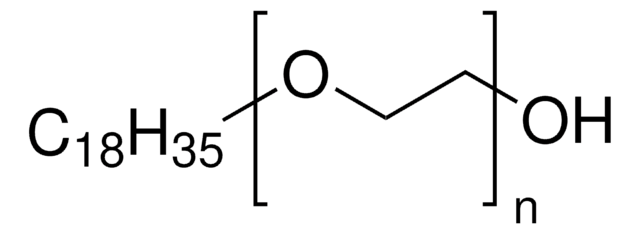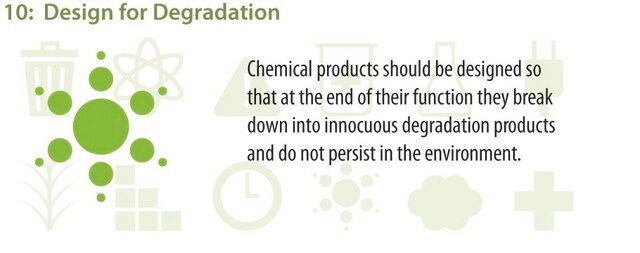Wichtige Dokumente
STS0212
ECO BRIJ® L4
average Mn ~362
Synonym(e):
Brij® L4, Polyethylenglykol-dodecylether, Polyoxyethylen(4)-laurylether
About This Item
Empfohlene Produkte
Beschreibung
non-ionic
Qualitätsniveau
Form
semisolid (may be liquid)
Mol-Gew.
average Mn ~362
Grünere Alternativprodukt-Eigenschaften
Use of Renewable Feedstocks
Design for Degradation
Learn more about the Principles of Green Chemistry.
sustainability
Greener Alternative Product
Verunreinigungen
≤1.0% water
Brechungsindex
n20/D 1.451 (lit.)
mp (Schmelzpunkt)
48 °C
Säurezahl
≤2.0 mg KOH/g
Hydroxylzahl
144‑165 mg KOH/g
Löslichkeit
water: insoluble
Dichte
0.95 g/mL at 25 °C (lit.)
HLB
9.7
Grünere Alternativprodukt-Kategorie
SMILES String
CCCCCCCCCCCCOCCOCCOCCOCCO
InChI
1S/C20H42O5/c1-2-3-4-5-6-7-8-9-10-11-13-22-15-17-24-19-20-25-18-16-23-14-12-21/h21H,2-20H2,1H3
InChIKey
WPMWEFXCIYCJSA-UHFFFAOYSA-N
Suchen Sie nach ähnlichen Produkten? Aufrufen Leitfaden zum Produktvergleich
Allgemeine Beschreibung
Leistungsmerkmale und Vorteile
- 100 % Renewable
- 100 % Bio-based
- Certified to the USDA BioPreferred Program
- Lower carbon footprint than petrochemical-based versions
- High-purity chemical suitable for a wide variety of research applications
Physikalische Eigenschaften
Sonstige Hinweise
Rechtliche Hinweise
Signalwort
Warning
H-Sätze
Gefahreneinstufungen
Acute Tox. 4 Oral - Aquatic Chronic 2 - Eye Irrit. 2 - Skin Irrit. 2
Lagerklassenschlüssel
10 - Combustible liquids
WGK
WGK 2
Flammpunkt (°F)
Not applicable
Flammpunkt (°C)
Not applicable
Hier finden Sie alle aktuellen Versionen:
Analysenzertifikate (COA)
It looks like we've run into a problem, but you can still download Certificates of Analysis from our Dokumente section.
Wenn Sie Hilfe benötigen, wenden Sie sich bitte an Kundensupport
Besitzen Sie dieses Produkt bereits?
In der Dokumentenbibliothek finden Sie die Dokumentation zu den Produkten, die Sie kürzlich erworben haben.
Unser Team von Wissenschaftlern verfügt über Erfahrung in allen Forschungsbereichen einschließlich Life Science, Materialwissenschaften, chemischer Synthese, Chromatographie, Analytik und vielen mehr..
Setzen Sie sich mit dem technischen Dienst in Verbindung.







